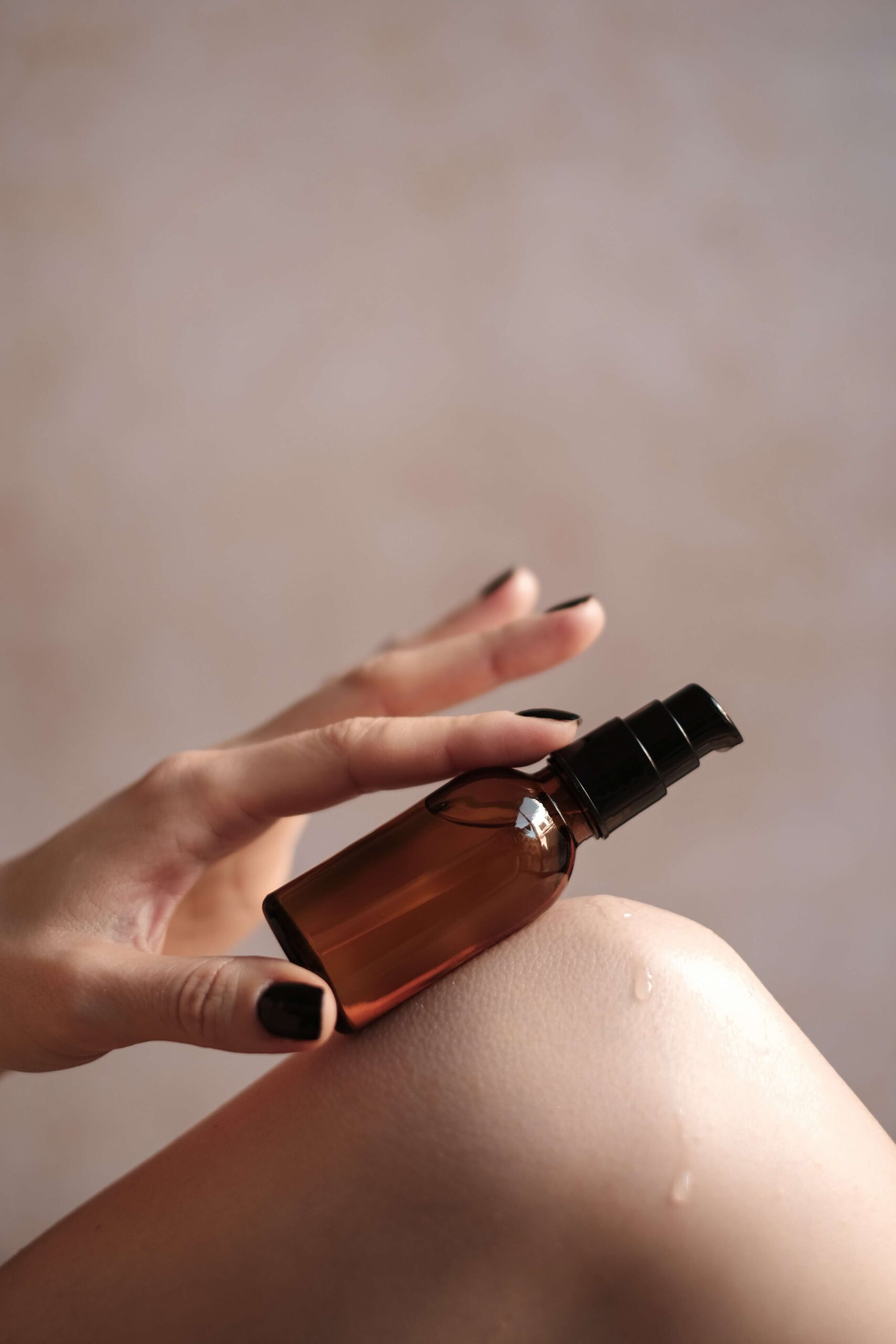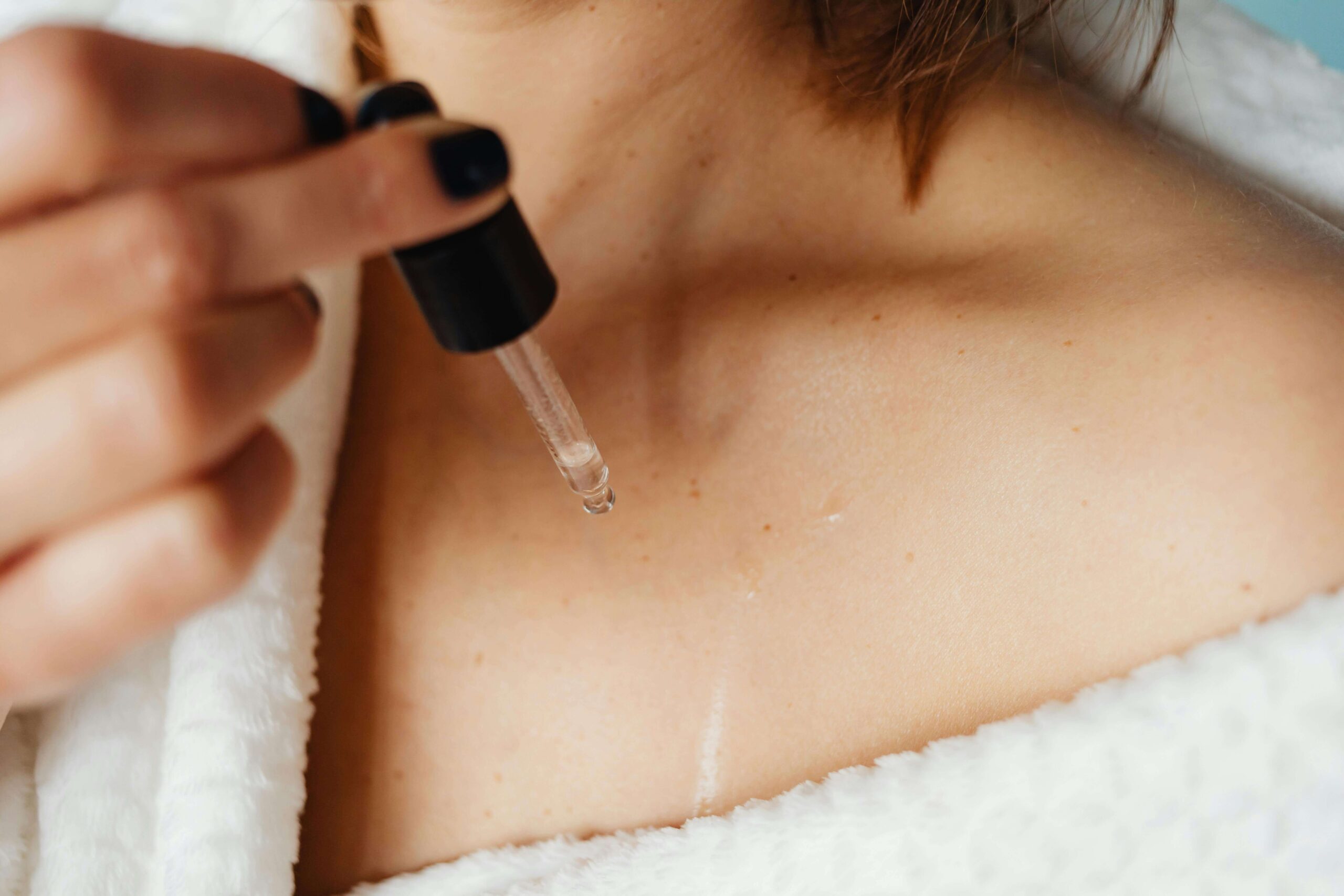Today, we’re diving deep into the realm of skin care to explore the topic of hyperpigmentation. Whether you’re dealing with those dark spots and hyperpigmentation from anything from hormonal concerns to sun damage, I’ve you got you covered. In this post, we’ll be sharing some tried and true methods to treat hyperpigmentation that are tailored for light to darker skin tones and everything in between.
So, if you’re ready to reclaim clarity in your complexion, you’re in the right place. Let’s dive into banishing dark spots and revealing your glow, one step at a time.
How to Treat Hyperpigmentation
What is hyperpigmentation?
Let’s dive into the world of what hyperpigmentation is.
Picture this: you’re enjoying a day in the sun, soaking up the warmth and feeling at one with nature. But alas, too much of a good thing can even lead to dark spots appearing immediately. Hyperpigmentation is a common skin condition caused by an overproduction of melanin, the pigment that gives our skin its color. Whether it’s from sun exposure, hormonal changes, or skin trauma, these dark patches can pop up anywhere on the body, leaving behind a trail of uneven skin tone. But fear not, there are ways to manage the unique mechanism of pigmentation.
Now, let’s talk about the various forms hyperpigmentation can take. Melasma, a type of hyperpigmentation often induced by hormonal shifts like pregnancy or birth control, manifests as larger, symmetrical patches on the face. On the other hand, post-inflammatory hyperpigmentation is like a rebel soul, appearing after skin inflammation caused by acne, which can show up as smaller, localized spots, ready to remind us of past battles, eczema, or even harsh beauty treatments. Treatments that include repeated use of skin-lightening chemicals like azelaic acid, alpha hydroxy acids, and glycolic acids can also cause hyperpigmentation if used incorrectly. This is also true for the excessive use of chemical peels and laser treatments.
What is post hyperpigmentation?
Post-hyperpigmentation refers to the aftermath of skin cells producing excess melanin, resulting in dark patches or spots on the skin. These areas can appear due to various factors such as sun exposure, hormonal changes, or inflammation.
The side effects of hyperpigmentation can include a lack of confidence and self-esteem, as these spots can be visible and affect one’s overall appearance. It’s important to address post-hyperpigmentation with a holistic approach that focuses on nourishing the skin and supporting its natural renewal process. Look for products with ingredients that can penetrate deep into the skin. Like vitamin C or gentle retinol, as they can help fade dark spots over time and promote a brighter complexion.
What is sun damage?
Also known as age spots, solar lentigines are flat spots of increased pigmentation, usually brown, black, or gray. They vary in size and can be found on the face, hands, upper back and areas most exposed to the sun. Solar lentigines increase with repeated sun exposure and age. They can develop in large numbers and are different from freckles, which are red or light brown and smaller. Freckles tend to develop earlier in life and can lighten in the winter months.
Lentigo maligna is a type of pigmentation growth that starts as a dark flat spot that slowly darkens, enlarges, and develops in areas of long-term sun exposure, such as the face, hands, and legs. Eventually, the spots can develop into melanoma, a type of skin cancer that begins in the top layer of skin and then invades the underlying skin tissues.
Too much sun exposure and the sun’s ultraviolet rays break down the collagen, elastin, and connective tissue deep inside the skin. This causes the skin to lose its strength, resulting in sagging, creases, and loose skin.
It is also worth mentioning there are many reasons that exposure to the sun is important for health. It is when the exposure veers into too much, too often. The damaging effects of the sun are also related to how much inflammation there is in one’s body. Inflammation makes us more reactive to the adverse effects of the sun.
*Pay close attention and have spots/moles/freckles checked by a dermatologist regularly, especially if they change shape, or color or become itchy or inflamed.*
What is melanin in relation to sun damage?
Ah, melanin – our skin’s magical protector against the sun’s powerful rays. This pigment not only gives us our beautiful shades of skin, hair, and eyes, but it also acts as a natural sunscreen. Melanin acts as a defense mechanism, absorbing harmful UV rays and shielding our precious skin cells from their damaging effects. However, even this superpower has its limits.
When we expose ourselves to excessive sunlight, our melanin production sometimes can’t keep up with the intensity, resulting in sun damage. Those pesky dark spots, wrinkles, and premature aging we dread? Blame it on long-term sun exposure that overwhelms our melanin’s protection. So, while our melanin is a mighty ally, it’s important to respect its limits and show our skin some love by seeking shade, wearing broad-spectrum sunscreen, and embracing our natural beauty, melanin, and all.
How to Treat Hyperpigmentation Externally
To reduce the appearance of hyperpigmentation externally, you should first begin with a supportive product routine. There are various hyperpigmentation treatments available, such as topical creams, chemical peels, laser therapy, and microdermabrasion. Opt for a botanically-based, results-driven, and both hydrating and lightly exfoliating home care routine. Avoid heavy creams and oils on the skin, as these can cause sluggishness to the skin when used improperly and will increase the appearance of hyperpigmentation.
Pair your product use with supportive skin movement practices such as Gua Sha, lymphatic drainage, and face massage. These movement modalities work by assisting micro-circulation, lymphatic drainage, and the body’s natural metabolic processes to break down. This will help remove waste and nourish skin while building clarity from the inside out.
If you are exposed to the sun often, a large-brimmed hat and broad-spectrum zinc or titanium dioxide mineral-based SPF is a must to treat hyperpigmentation concerns, as this protects the skin from further hyperpigmentation.
How to treat hyperpigmentation through more medical-style spa treatment methods could include, for example, a series of microneedling treatments. These treatments must be performed by a knowledgeable practitioner and will yield the best results with a holistic nourishing and supportive home care routine.
How to Treat Hyperpigmentation Internally
Hyperpigmentation can be a representation of heat and/or stagnation in the body. The liver is also deeply connected to hyperpigmentation in the skin. Alcohol, inflammatory foods, diet, and stress can all create a blotchiness/stagnation and lack of lymph movement in the skin. Each of these factors affects the appearance of hyperpigmentation. Both internal and external hydration are also key components in keeping the complexion flushed and healthy.
Keep inflammation low throughout the body, avoid a heat-inducing diet, keep coffee (acidic) to a minimum, have little to no alcohol, and avoid birth control and both synthetic medication and supplements. The more hydrated, well-rested, and well-fed with highly energetic food, the less noticeable pigmentation concerns may be. Exhaustion, stress, frustration, and agitation can also induce blotchiness and deepen pigmentation concerns. Our emotional states are heavily reflected in our skin. You can read more about this correlation between emotional health and skin here.
There you have it, some simple key knowledge and methods in treating hyperpigmentation.
With all of that being said, hyperpigmentation is so common. Do not let the filters and lighting methods of the current times believe otherwise.
However, it’s important to remember that everyone’s skin is unique. What works for one person may not work for another. Empowering yourself with knowledge and exploring different options will help you make informed decisions and find the treatment that feels right for you.
For more valuable info on how you can glow from the inside out, peruse my blog and then I invite you to join me inside The Beauty Collective, my all-inclusive skincare and wellbeing course that teaches skincare from the inside out. When you join, you’ll learn my authentic and results-driven practices as well as a sustainable and graceful approach to aging using minimal products. It’s a less-is-more approach to skincare and I can’t wait to see you there!





